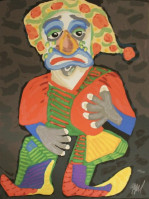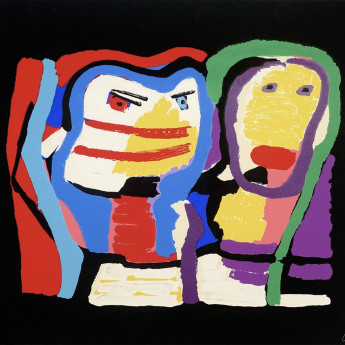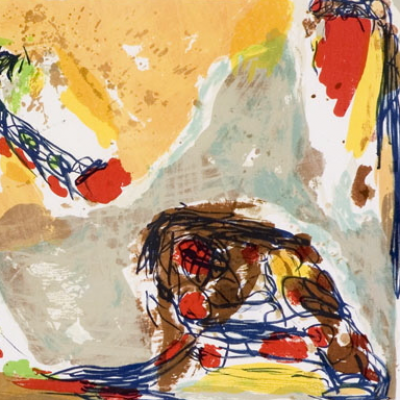
Details
Artist
Styles
// Le Massacre by Constant Nieuwenhuys, a 1972 lithograph, is a powerful and dynamic composition that captures the chaotic and violent intensity suggested by its title. The work, measuring 57 x 77.5 cm, uses an expressive and gestural style to depict fragmented figures amidst splashes of deep red, evoking a sense of turmoil and conflict. The rough, overlapping lines and splattered forms create a sense of movement, suggesting a chaotic battle or massacre scene. This limited edition print, produced in a run of 350 copies plus artist proofs, showcases Constant’s critical view on humanity and his engagement with themes of violence and social unrest.
Le Massacre, 1972
form
Medium
Size
57 x 77.5 cm
- Inches
- Centimeters
Edition
Price
- USD
- EUR
- GBP
Details
Artist
Styles
// Le Massacre by Constant Nieuwenhuys, a 1972 lithograph, is a powerful and dynamic composition that captures the chaotic and violent intensity suggested by its title. The work, measuring 57 x 77.5 cm, uses an expressive and gestural style to depict fragmented figures amidst splashes of deep red, evoking a sense of turmoil and conflict. The rough, overlapping lines and splattered forms create a sense of movement, suggesting a chaotic battle or massacre scene. This limited edition print, produced in a run of 350 copies plus artist proofs, showcases Constant’s critical view on humanity and his engagement with themes of violence and social unrest.
- Recently Added
- Price (low-high )
- Price (high-low )
- Year (low-high )
- Year (high-low )
What is Situationism?
Situationism is a psychological theory that gained prominence in 1968, following the publication of a monograph by Walter Mischel that sparked the Person-situation debate. This theory argues that behavior is primarily influenced by external situational factors rather than internal traits or motivations, challenging the ideas of trait theorists like Raymond B. Cattell and Hans Eysenck, who emphasized stable personality traits. It is important not to confuse this with the Situationist International movement, an artistic and political movement founded by Asger Jorn, which focused on the critique of modern consumer society and the influence of environments on human behavior.













